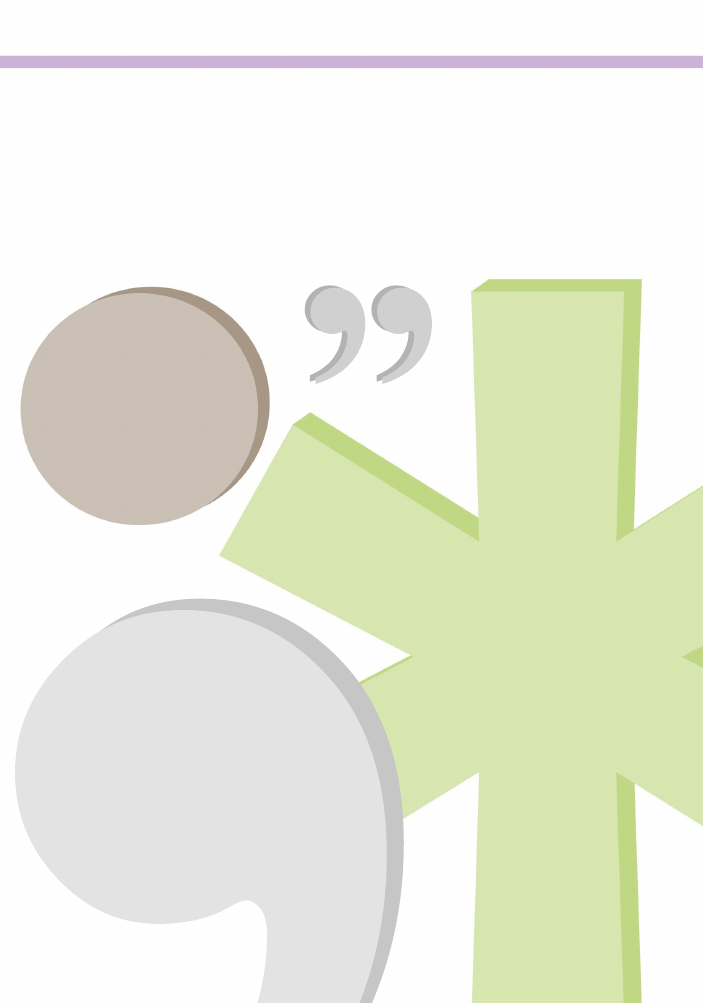
268 / SPEAKING AND WRITING
Becoming a better writer
Very few people think writing is easy. Good writing—that is, writing
with power, grace, dignity, and impact—takes time, careful thought,
and revision. Such writing is often the product of many years of
training and practice. Even though writing may sometimes seem
like hard work, with a little effort you can learn to do it well.
Organizing your writing
Good business writing is simple, clear,
and concise. By not calling attention to
itself, good writing is “transparent,”
helping the reader focus on the idea you
are trying to communicate rather than on
the words that you are using to describe it.
The key to good business writing is
organization. You need to know where
you are going before you start, so do your
research and identify the key issues you
need to cover. Compose a list of the most
important points, and use them to create
Have I explained
adequately?
Does my writing flow in a
logical way, and have I given
complex explanations in a
step-by-step form?
Have I ”translated“ any
technical terms?
an outline. If your document will include
an overview section containing your
purpose for writing, write this first. Next,
tackle the most important paragraphs,
before filling out the details and any
supplementary material.
Use simple, down-to-earth words,
and avoid needless ones and
wordy expressions
US_268-269_A_Better_Writer.indd 268 30/05/16 3:04 pm

BECOMING A BETTER WRITER / 269
Writing for clarity
When composing a memo, letter, or
report, keep in mind that your reader
often doesn’t have much time: senior
managers, in particular, generally have
tight schedules and too much to read.
They need your written communication
to quickly and clearly give them the
details they need to know.
Ensure that your writing style is
both precise and concise. Use simple,
down-to-earth words, and avoid
needless ones and wordy expressions.
Simple words and expressions are more
quickly understood and can add power
to your ideas. Be direct and avoid vague
terms such as “very” and “slightly”;
this will show that you have confidence
in what you are saying and will add
power to your ideas. Make sure, too, that
everything you write is grammatically
correct—you don’t want your busy reader
to have to reread your sentences to try to
decipher their meaning.
Keep your paragraphs short; they are
more inviting and more likely to get read.
If your document must include numbers,
use them with restraint—a paragraph
filled with numbers can be difficult to
read and follow. Use a few numbers
selectively to make your point, then
put the rest in tables and graphics.
ALWAYS EDIT
Revising and editing are
critical to good writing.
Putting some time between
writing and editing will
help you be more objective.
Revise your writing with the
intent to simplify, clarify, and
trim excess words.
Tip
Have I said enough to answer
questions and allay fears
without giving too much detail?
Have I used visuals to help
explain complex facts?
Have I cautioned the reader,
where necessary, against
common mistakes and
misreading of the information?
an outline. If your document will include
an overview section containing your
purpose for writing, write this first. Next,
tackle the most important paragraphs,
before filling out the details and any
supplementary material.
of people will read the
headline of a piece of text;
only 20% will read the rest
80%
US_268-269_A_Better_Writer.indd 269 30/05/16 3:04 pm

270 / SPEAKING AND WRITING
In focus
THE RIGHT ORDER
A poorly organized letter reads like
a mystery story. Clue by clue, it
unfolds details that make sense
only toward the end—if the reader
gets that far. Your job is to make it
easier for the reader, by explaining
each point with an overview,
followed by details. To avoid
any confusion, always give
directions before reasons, requests
before justifications, answers before
explanations, conclusions
before details, and solutions before
problems. Try the approach used in
newspaper articles. They start with
the most important information and
taper off to the least important.
Making your writing come alive
To escape from outdated, excessively formal
writing styles, try to make your writing more like
your speaking, and then ”tidy it up.” Imagine your
reader is in front of you and aim all the time for
writing that is clear, fresh, and easy to read. You may
need to write a first draft for structural purposes,
and then go back over your document.
VIGOROUS AND
DIRECT
Use active
sentences and
avoid the passive
voice. Be more
definite by limiting
the use of the
word “not.”
Make sure that your writing is:
US_270-271_A_Better_Writer.indd 270 31/05/16 5:29 pm

BECOMING A BETTER WRITER / 271
MAKE IT PERFECT
Eliminate factual errors,
typos, misspellings, bad
grammar, and incorrect
punctuation in your writing.
Remember that if one detail
in a memo you have written
is recognized to be incorrect,
your entire line of thinking
may be considered suspect.
Tip
FREE OF CLICHÉS
AND JARGON
Tired words and
expressions make
your writing appear
superficial.
MADE UP OF SHORT
SENTENCES
This won’t guarantee clarity,
but short sentences will
prevent many of the
confusions that can easily
occur in longer ones. Try
the ear test: read your
writing aloud and break
apart any sentence you
can’t finish in one breath.
CONNECTING WITH
THE READER
Reach out to your reader by
occasionally using questions.
A request gains emphasis
when it ends with a question
mark. Rather than writing,
“Please advise as to whether
the meeting is still scheduled
for February 21st,” simply
ask: “Is the meeting still
scheduled for February 21st?
When writing text,
imagine that your reader
is with you: this will
help make your writing
more accessible
US_270-271_A_Better_Writer.indd 271 30/05/16 3:04 pm

272 / SPEAKING AND WRITING
USE CONTRACTIONS
Make your writing softer
and more accessible by
occasionally using the
contractions that we naturally
speak with, such as “I’m,”
“we’re,” “you’d,” “they’ve,”
“can’t,” “don’t,” and “let’s.”
ALLOW SENTENCES TO
END WITH A PREPOSITION
Don’t reword a sentence just to move
a preposition (e.g. “after,” “at,” “by,”
“from,” “of,” “to,” or “up”) from the
end. You are likely to lengthen, tangle,
and stiffen the sentence.
Capturing and
keeping your
readers’
attention
Meeting your reader’s needs
Before you write, find out what the
reader expects, wants, and needs. If
you later discover that you must deviate
from these guidelines, let the reader
know why. When composing your
document, don’t include material that
you don‘t need: you may be accused of
missing the point. Make sure, too,
that you always separate facts from
opinions in your writing. The reader
should never be in doubt as to what
you know to be true, and what you
think may be the case. Always apply
a consistent approach to avoid
misunderstandings.
US_272-273_A_Better_Writer.indd 272 30/05/16 3:04 pm
..................Content has been hidden....................
You can't read the all page of ebook, please click here login for view all page.
